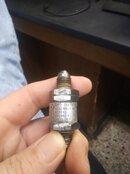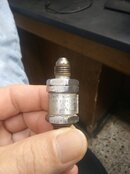Dark Wolf
Contributor
Last year I picked up a small portable compressor. The line after the 4th stage was leaking a little, so I am replacing the line. There is a check valve in the line labelled as follows:
Westinghouse
Air Brake Co.
USA
Ser No. cant quite make out number
AP 2 Check Valve
Assembly No.
820743
Operating Press
3000 PSI
I have looked online, but cant find one that looks like mine. So, those of you who are much smarter than I am on these, what do you recommend?
Thank you in advance!!
DW
Westinghouse
Air Brake Co.
USA
Ser No. cant quite make out number
AP 2 Check Valve
Assembly No.
820743
Operating Press
3000 PSI
I have looked online, but cant find one that looks like mine. So, those of you who are much smarter than I am on these, what do you recommend?
Thank you in advance!!
DW






